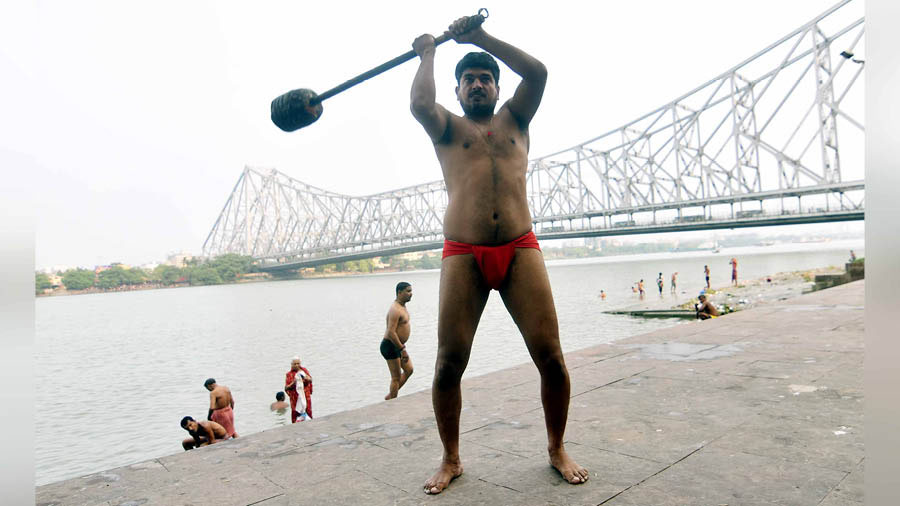Near one of Asia’s biggest flower markets, on the banks of the Hooghly, opposite the Howrah bridge, survives Kolkata’s only akhara, one of the last of its kind in the country. Every morning, the Siyaram Akhara Bayam Samity plays host to over 50 pahalwans who come here from the farthest corners of the city with a single mission — to keep kushti alive.
A mentor of Dara Singh, Nathmal Pareek or Nathmal Pahalwan as he was more popularly known, founded this akhara in 1961. Through sport, Pareek wanted to instil in his pahalwans discipline and focus. Within a few years of the Siyaram Akhara being set up, Jwala Tiwari joined as an eight-year-old recruit. One of eight siblings, Tiwari came from a family of wrestlers in Gorakhpur. His father noticed his waning academic interest and pushed him to join the akhara. His dedication to his training eventually gave him the credentials he needed to take over from Pareek. In time, everyone began fondly referring to Tiwari as ‘Guruji’.
When Tiwari passed away on January 1 this year, Suraj Kant, his son, inherited his father’s legacy. His biggest priority, he says, was preserving the akhara’s ethos. “He [Tiwari] was my father and our guru. He taught us everything. Jwala Tiwari trained thousands of boys here, and more than 25 of his students represented the country as wrestlers. Even on his last day, he was here, guiding the boys. His passing left us empty. We couldn’t cope for a while, but then the boys told me, ‘Suraj Bhaiya, ab aapko hi sab dekhna hai,’ (you have to look after it all.)”

Trained by his father at Siyaram Akhara, Suraj Tiwari has won more than 10 gold medals at the state level. ‘Pahalwani is khandani (ancestral) for us,’ he says
Much like his father, Suraj, too, joined the akhara at a tender age. He was six when he was brought here for the first time. “Back then, everyone was huge and I was the only kid,” he says, “but I enjoyed the feeling of fighting in the mud. I did get injured a bit but that never mattered. It was a part of the process.” Suraj, of course, had kushti in his blood. “Pahalwani is khandani (ancestral) for us. My grandfather and great-grandfather were both pahalwans. My father followed in their footsteps, before guiding me and my brother, too,” adds Suraj.
Trained by his father at Siyaram Akhara, Suraj has won more than 10 gold medals at the state level. He has also competed nationally on four occasions. “Guruji also played nationals a few times, but he fought more dangals,” says Suraj. “This was because government competitions had no money, but there were cash prizes in dangals. My father fed our entire family through the dangals at Dharmatala! Unfortunately, the culture of dangals in Kolkata has largely eroded now, but you still sometimes see some happen on Naag Panchami.” With a telling smile, Suraj adds that he takes “immense pride” in keeping the culture of kushti alive in Bengal.
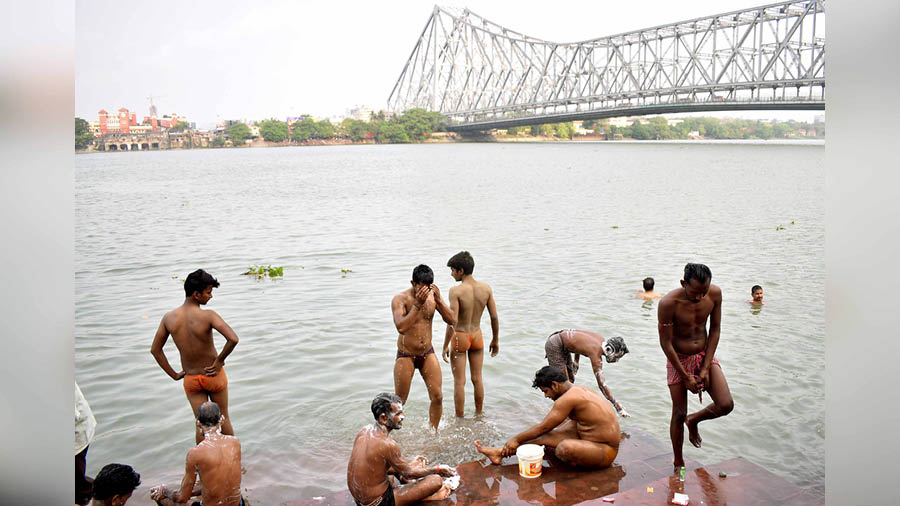
The Howrah Bridge plays the perfect backdrop to the akhara
Unlike government competitions, wrestlers in dangals don’t fight in accordance with their weight categories. One can challenge any opponent with a handshake. Suraj, too, has fought a few dangals. He remembers one fondly: “I was once challenged by a BSF jawan who weighed 74 kg. I normally fight in the 54 kg category. So, when I told my father I wanted to fight him, he said I wouldn’t be able to win. Defeating that opponent was very exhilarating!”
The fight against despair
Rahul Nopany, a pahalwan who comes to the Siyaram Akhara every morning from Rishra, says, “In the Ramayana, combat wrestling was introduced as malla yuddha. Hanuman actively practised it. Later, Krishna also engaged in malla yuddha with his uncle Kamsa. In the Mahabharata, Bheem, too, was a champion of the sport.” Making the case that the sport has been around for “9,000 years”, Nopany underscores the value of tradition. The foundations of modern-day kushti, he tells us, can be found in the three major forms of malla yuddha: “Hanumanti (a highly technical format), Jambuvanti (which relies on locking and holding the opponent), and Jarasandhi (which emphasises the breaking of limbs and joints).”

The pahalwans strike a pose in front of the akhara
Nopany admits to having suffered severe depression before kushti came into his life. “As I struggled with my college studies, I confided in one of my spiritual gurus. He took my hand and brought me here. After introducing me to Guruji, he told him, ‘Isko todo!’ (‘Break him!’). When Guruji started, it felt like an electric current was passing through my body. That was in 2004, and since then, I have never stopped coming here,” he says.
The wrestler’s code, it seems, is passed on often when it is needed most. Ajay Singh, for instance, was addicted to drugs and alcohol until three years ago. He was also diabetic. “One day, Suraj ran into me on Howrah bridge and forcefully brought me here,” he says. Suraj, too, tells us his version of the story. “I didn’t like seeing him like that, so I urged him to come to our akhara. Once he came here, he was given the langot to wear and he became a changed person.” Singh, a man in his mid-40s, says while doing his 20-odd push-ups, “That was two-and-a-half years ago. Since then, my sugar problems have gone, along with all my stress and tension. Ekdam nasha-mukt ho gaye hain! (I am now free of all addictions!)”
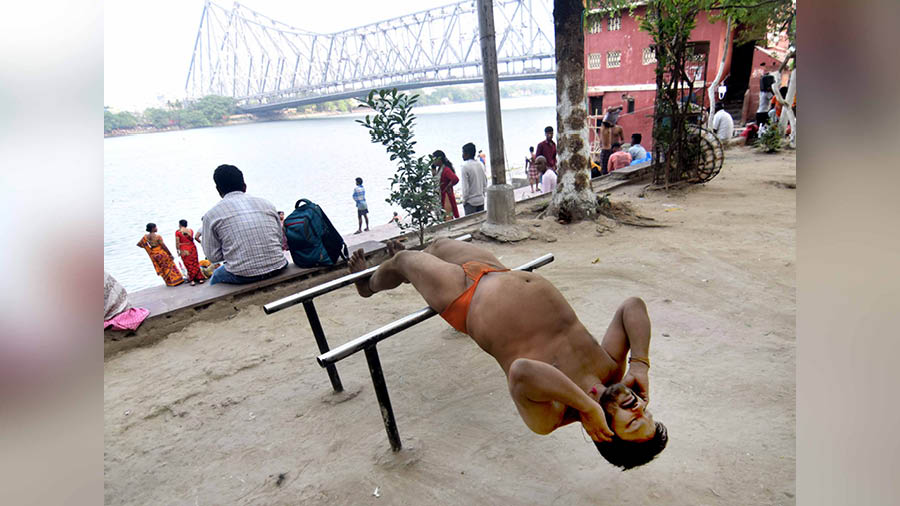
Ajay Singh was addicted to drugs and alcohol until three years ago, before joining the akhara
For the pahalwans, the langot is more than just an item of clothing. Nopany says, “Guruji always said that the moment we tie this langot, we make a promise to never look at a woman with malicious eyes. We promise to treat every woman with the same respect we give our mothers and sisters. As brahmacharis, we only have sexual relations with our wives, and that, too, only to have a child.” The langot, Nopany believes, transforms a pahalwan’s sexual energy into spiritual energy: “You can’t enter the akhara without it. We don’t wear shorts!”
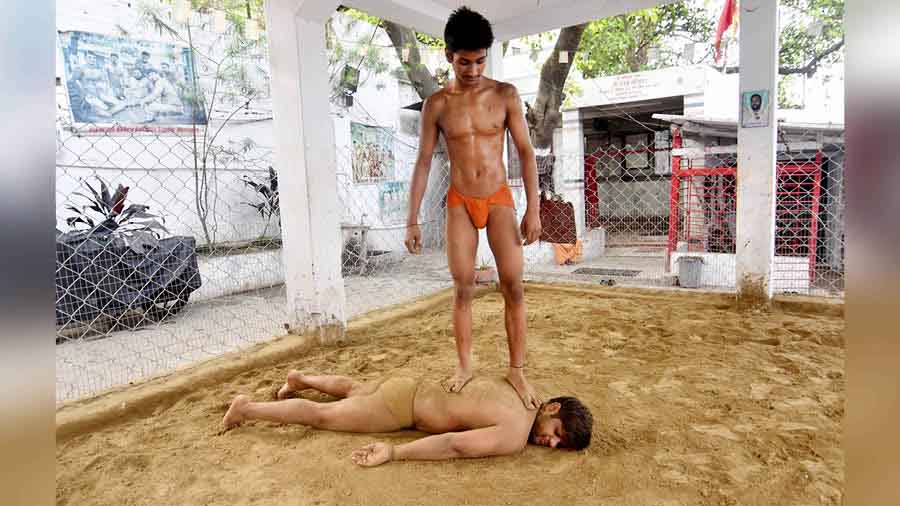
For the pahalwans, the langot is more than just an item of clothing. ‘You can’t enter the akhara without it. We don’t wear shorts’
Every morning at 4 am, the akhara’s pahalwans wear the langot and rub their bodies with mustard oil. “The oil strengthens the bones, improves blood circulation, and warms up the body for exercise,” says Suraj. After this comes the important part: tending the mud. “The maati (soil) of the akhara is very pure. It comes directly from the Ganga,” adds Suraj. “This mud has neem, turmeric, ghee, salt, mustard oil and milk. We start our day by worshipping it, after which it is dug and softened. This is how every morning started under Guruji, and this is how we still to do it.” Nopany tells us that people come here from around the world: “Judo and jiu-jitsu black belts all want to smear the mud on their forehead and feel the energy.”
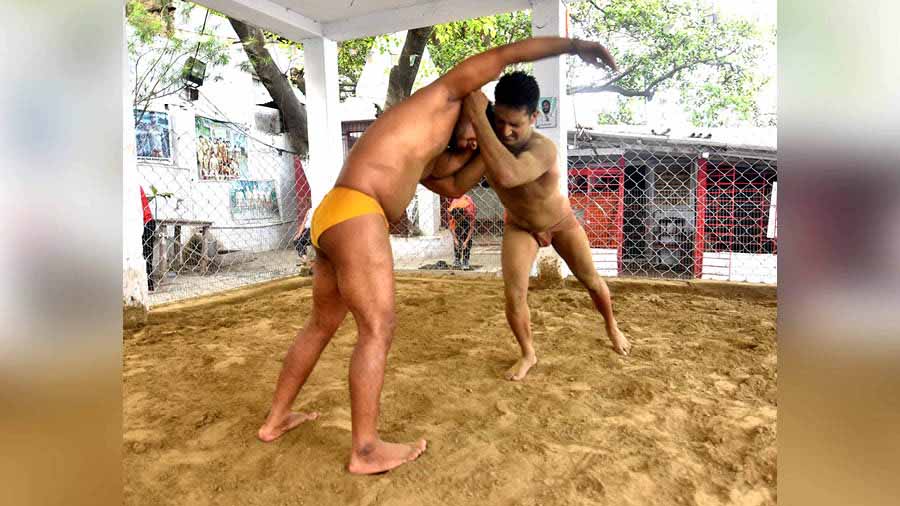
‘The maati (soil) of the akhara is very pure. It comes directly from the Ganga,’ says Suraj, adding, ‘this mud has neem, turmeric, ghee, salt, mustard oil and milk’
After doing a multitude of freehand and weight exercises, the wrestlers finally rub mud over themselves and prepare themselves for kushti. Singh says, “We apply the mud for grip and friction. It also provides some relief during the heat and it builds stamina. If you ever feel weak, just apply this mud on yourself and you’ll feel the difference.” Before they leave for their workplaces at 8 am, the morning’s activities culminate with a holy bath in the Ganga.
A family that wrestles together
Seeing the zeal with which they take to this sport, one question almost asks itself: How do they keep up this passion every day? Singh tells us that Tiwari remains their biggest champion. “Guruji would wake up at 2.30am every morning and run 20 laps of the Howrah bridge. After that, he would do 2,000 dands (push-ups) and baithaks here. He’d then fight 20 kids like us, do some weight training, finally ending his routine with eight litres of milk!”
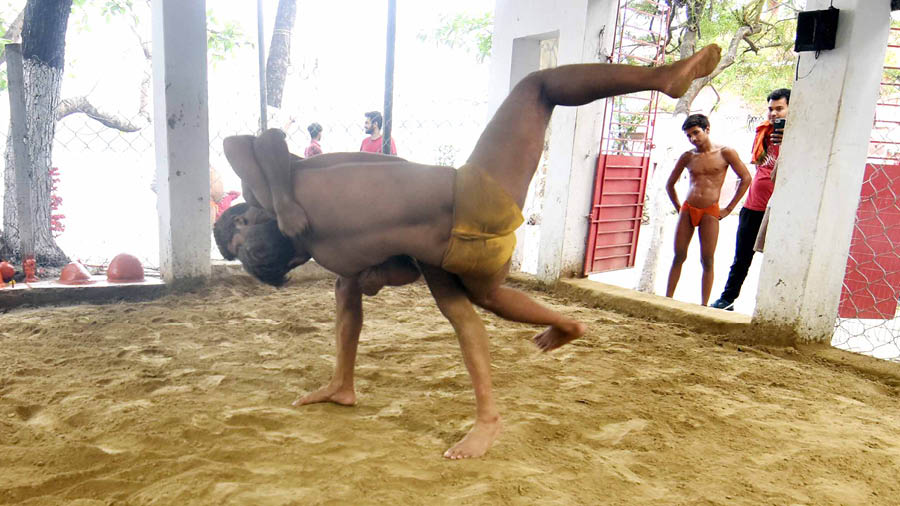
The pahalwans wrestle
Nopany adds that Tiwari taught his pahalwans to wrestle “not just for sport or fitness, but for spirituality”. The akhara, he says, professes a vegetarian diet and is anti-addiction. “Despite rampant substance abuse in the slums around us, Guruji ensured that none of his students did any drugs. His training changed our lifestyle, while also empowering us with the art of warfare. These values have remained consistent since this akhara started here in 1961.”
A pahalwan’s diet comprises almonds, cashews, raisins, ghee and milk. They are often asked to go easy on the rice. This all then helps build stamina, which is essential for kushti. The idea, however, is for wrestlers to not only be better fighters in the akhara, but also be better people outside it. Nopany says, “Today’s youth is consumed by technology and they are constantly diverted from their studies. Training in the akhara allows them to stay away from such distractions and focus on things that are more important to them.”

The wrestlers brush their teeth with neem sticks
Since Suraj’s goal is to make kushti accessible, no pahalwan at the Siyaram Akhara is expected to pay a fee. He says, “There is no caste or religious barrier. People from all communities come here. Sab langot ki mahima hai. (It is all because of the langot and its glory.) My father never charged a fee, and we continue not to do so. Our only motto is to teach with utmost honesty, so that the boys can one day play for India. If anyone wants to learn, all they need is a langot!” After a brief pause, Suraj adds that everyone knows him for wrestling. “They know me as Suraj Pahalwan! I have no identity beyond that. Our biggest privilege is practising on the Ganga’s sand each morning, and bathing in it after.”
Having completed their exercises for the day, the wrestlers begin brushing their teeth with neem sticks. When asked if they now look at themselves as family, Nopany is the first to quip, “Nahin, hum toh langotiya yaar hain!” The laughter in the air is hearty and infectious.
